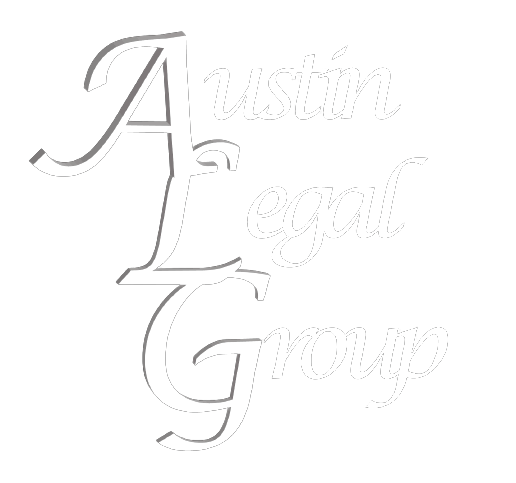A Brief Overview
Insider trading is the illegal practice of buying or selling a public company’s securities on the basis of material non-public information. It is prohibited under the anti-fraud provisions of the Securities Exchange Act of 1934 (Exchange Act), particularly in Section 10(b) and Rule 10b-5 thereunder. It is customary for an insider to adopt a 10b5-1 trading plan establishing predetermined share prices, amounts and transaction dates in order for the insider to trade securities while avoiding insider trading penalties.
Section 10(b) makes it illegal for any individual, directly or indirectly, to use manipulative or deceptive tactics in connection with the purchase or sale of any registered security or unregistered security, including securities-based swap agreements. Rule 10b-5 further establishes unlawful actions related to insider trading, such as employing fraudulent schemes, making untrue statements of material facts, or omitting material information to mislead others. It also covers any act, practice, or business conduct that operates or could operate as a deceitful practice.
To bring clarity to the anti-fraud provisions and combat insider trading, the Securities and Exchange Commission (SEC) introduced Rule 10b5-1 in 2000. Rule 10b5-1 allows insiders of publicly-traded companies to set up a trading plan for selling securities they own. The rule provides an affirmative defense to insider trading liability under Section 10(b) and Rule 10b-5. However, despite this effort, the legal interpretation of insider trading remained largely influenced by court decisions.
Recent Amendments
The SEC adopted amendments to Rule 10b5-1 of the Exchange Act on December 14, 2022. The amendments aim to enhance disclosure requirements and investor protections against insider trading. Insider trading laws are primarily based on judicial precedence, making them difficult to navigate. The amendments provide clarity to the marketplace and update the conditions for the 10b5-1 affirmative defense against insider trading liability.
The key amendments include:
- Cooling-off periods before trading can begin under a Rule 10b5-1 plan.
- A condition that all individuals entering into a Rule 10b5-1 plan must act in good faith with respect to the plan.
- Directors and officers must provide representations in their plans, certifying they are not aware of any material nonpublic information and that they are adopting the plan in good faith to avoid evading Rule 10b-5 prohibitions.
- A restriction on the use of multiple overlapping trading plans, allowing only one single-trade plan per twelve-month period for all individuals other than issuers.
- Enhanced disclosures about a company’s insider trading policies and procedures, including quarterly disclosure by a company regarding the use of Rule 10b5-1 plans and other trading arrangements by its directors and officers.
The amendments also introduce new disclosure obligations, requiring companies to report on the use of Rule 10b5-1 and other trading arrangements by directors and officers for trading the company’s securities. Companies must also disclose their insider trading policies and procedures in annual reports and proxy or information statements.
Furthermore, the amendments affect Forms 4 and 5, requiring insiders to identify whether reported transactions were executed pursuant to a trading plan. Bona fide gifts of securities are required to be reported on Form 4 instead of Form 5.
The new 10b5-1 rules became effective on February 27, 2023. Section 16 reporting persons must comply with the amendments to Forms 4 and 5 for beneficial ownership reports filed on or after April 1, 2023. Smaller reporting companies must comply with the new disclosure and tagging requirements in their periodic reports or proxy statements covering the first full fiscal period starting on or after October 1, 2023. All other companies must comply with these requirements for the first full fiscal period starting on or after April 1, 2023.
Recent Interpretations
The SEC published three new Compliance and Disclosure Interpretations (C&DIs) on May 25, 2023, addressing the recently effective Rule 10b5-1 amendments. These C&DIs offer clarity on compliance dates for the new disclosure requirements and the cooling off period when an individual has two Rule 10b5-1 plans.
Question 120.26 clarifies the timing for companies to provide quarterly and annual disclosures required by Items 408 and 402 of Regulation S-K (and Item 16J of Form 20-F). Compliance dates vary based on fiscal year-end:
- December 31 fiscal year-end company: Quarterly disclosures should start in the Form 10-Q for the period ended June 30, 2023, and continue in the Form 10-Q for the period ended September 30, 2023, and the Form 10-K for the fiscal year ended December 31, 2023.
- June 30 fiscal year-end company: Quarterly disclosures should begin in the Form 10-K for the fiscal year ended June 30, 2023.
- December 31 fiscal year-end company: Annual disclosures must first be provided in the Form 10-K or 20-F for the fiscal year ended December 31, 2024.
- June 30 fiscal year-end company: Annual disclosures must first be provided in the Form 10-K or 20-F for the fiscal year ended June 30, 2024.
For smaller reporting companies, compliance with the new disclosure and tagging requirements starts with the first filing covering the first full fiscal period beginning on or after October 1, 2023, leading to different compliance dates:
- December 31 fiscal year-end company: Quarterly disclosures must begin in the Form 10-K for the fiscal year ended December 31, 2023.
- June 30 fiscal year-end company: Quarterly disclosures should start in the Form 10-Q for the period ended December 31, 2023.
- December 31 fiscal year-end company: Annual disclosures must be provided in the Form 10-K or 20-F for the fiscal year ended December 31, 2024.
- June 30 fiscal year-end company: Annual disclosures must be provided in the Form 10-K or 20-F for the fiscal year ended June 30, 2025.
Question 120.27 clarifies the disclosure requirement timing for proxy and information statements:
- Companies other than smaller reporting companies must first provide this information in proxy statements for the first annual meeting for the election of directors (or information statements for consent solicitations) after completing the first full fiscal year beginning on or after April 1, 2023.
- Smaller reporting companies must first provide this information in proxy statements for the first annual meeting for the election of directors (or information statements for consent solicitations) after completing the first full fiscal year beginning on or after October 1, 2023.
Finally, question 120.28 addresses the cooling off period when an individual has multiple Rule 10b5-1 plans:
- Rule 10b5-1(c)(1)(ii)(D)(2) allows an individual (other than the issuer) to have two separate Rule 10b5-1 plans as long as the later-commencing plan’s trading starts after the earlier-commencing plan’s trades are completed or have expired.
- If the individual terminates the earlier-commencing plan, the later-commencing plan is subject to an “effective cooling-off period” starting from the termination date of the earlier plan and lasting for the time specified in Rule 10b5-1(c)(1)(ii)(B).
- If the earlier-commencing plan ends by its terms without the individual’s action, the cooling-off period for the later-commencing plan is not reset, and trading may begin as soon as the plan’s original cooling-off period is satisfied, possibly immediately after the earlier plan’s end.
Disclaimer
Austin Legal Group, APC (ALG) does not make any representations or warranties, expressed or implied, as to the accuracy, completeness or fitness for a particular purpose of this or any article. This article is meant for general informational purposes only and should not be construed as, and does not constitute, legal advice. No one should take any action regarding the information in this article without first seeking the advice of an attorney. This article does not create an attorney-client relationship. No attorney-client relationship will exist with ALG or any attorney affiliated with it unless a written contract is signed by all parties and any conditions in such contract are satisfied. Please reach out to Gina M. Austin, Esq. at (619) 924-9600




